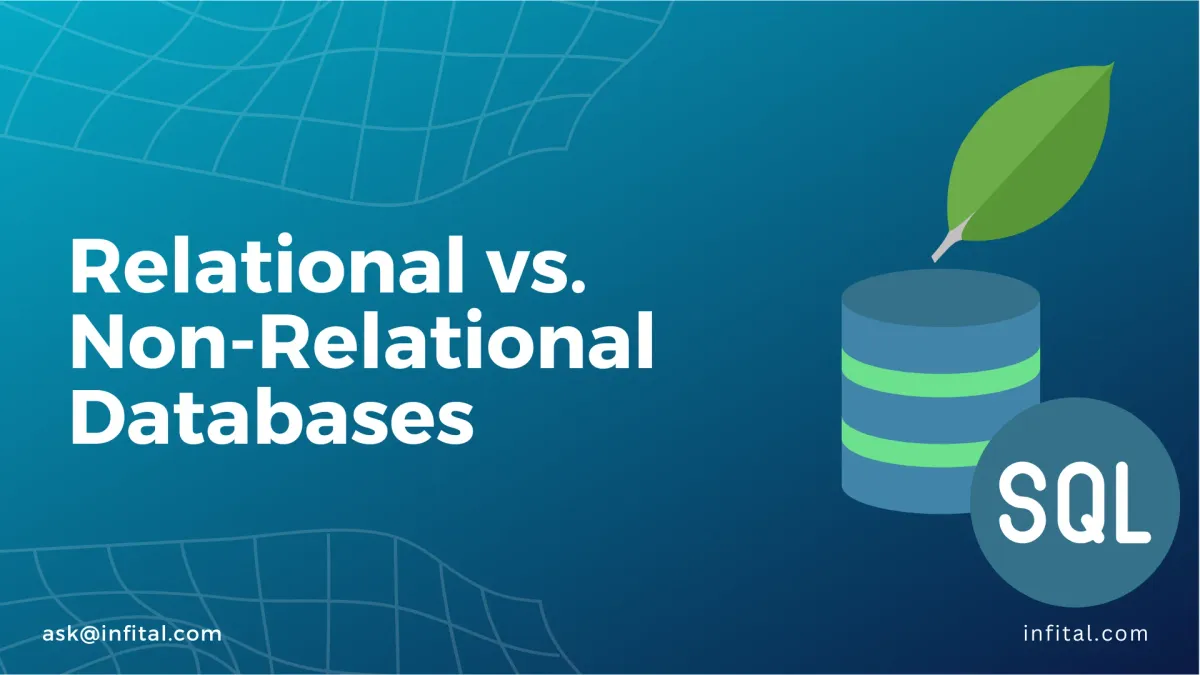Choosing the Right Database: A Comparison of Relational vs. Non-Relational Databases
Relational databases excel in structured data and well-defined relationships, while non-relational databases offer flexibility and scalability for dynamic applications.

When it comes to managing and organizing data, databases play a crucial role. In the realm of database management systems, two primary contenders stand out: relational and non-relational databases. Understanding the nuances between these two types can greatly impact the success of your projects and the scalability of your applications. In this article, we will embark on a journey to explore the key differences between relational and non-relational databases, highlighting their strengths and weaknesses. By the end, you'll be equipped with the knowledge to make informed decisions when selecting the ideal database for your specific needs.
The Fundamentals of Relational Databases
Relational databases are the more traditional and structured option for data storage. They organize data into tables, where each row represents a record, and each column represents a field. This tabular structure enables easy querying and data manipulation using the powerful Structured Query Language (SQL). Let's illustrate this with an example:
Suppose we have a table named "WeatherData" with columns like "TimeOfDay," "Date," "Temperature," and "WeatherCondition." Each row will hold specific data corresponding to that time and date, such as:
| TimeOfDay | Date | Temperature | WeatherCondition |
|---|---|---|---|
| 08:00 AM | 2023-08-01 | 25°C | Sunny |
| 12:00 PM | 2023-08-01 | 30°C | Cloudy |
| 04:00 PM | 2023-08-01 | 28°C | Rainy |
The structured nature of relational databases makes them ideal for scenarios where data has well-defined relationships or dependencies.
The Advantages of Relational Databases
- Data Integrity: Relational databases enforce data integrity through constraints like primary keys, foreign keys, and unique indexes. These constraints ensure that data remains accurate and consistent.
- Ease of Use: With SQL as the standard querying language, developers and analysts are well-versed in extracting valuable insights from the data.
- Well-Established: Relational databases have been around for decades, leading to mature technology, extensive support, and a vast community.
The Limitations of Relational Databases
- Scalability: While relational databases perform exceptionally well for small to medium-sized datasets, they might face challenges in handling large-scale data growth.
- Schema Rigidity: Modifying the schema of a relational database can be complex, especially when dealing with frequent changes to data structures.
The Fundamentals of Non-Relational Databases
Non-relational databases, on the other hand, embrace a more flexible and schema-less approach. They store data in a variety of formats, such as JSON, XML, or key-value pairs. This flexibility enables you to store and access diverse data types efficiently. An example will help clarify this concept:
Suppose we have a document-based non-relational database, where we store data related to a customer:
{
"customer_id": 1001,
"name": "John Doe",
"email": "john.doe@email.com",
"phone": "+1 123-456-7890",
"address": {
"street": "123 Main St",
"city": "Anytown",
"state": "CA",
"zip": "12345"
}
}In this case, the data for each customer is stored within a single document, and the structure can vary from one document to another.
The Advantages of Non-Relational Databases
- Flexibility: Non-relational databases can handle semi-structured and unstructured data efficiently, making them ideal for dynamic and rapidly changing applications.
- Scalability: Non-relational databases are designed to scale horizontally, allowing them to handle massive amounts of data and traffic with ease.
- Speed: Non-relational databases often outperform relational databases in terms of read and write operations due to their optimized data storage mechanisms.
The Limitations of Non-Relational Databases
- No Built-in Relationships: Non-relational databases lack the inherent support for establishing relationships between different sets of data.
- Learning Curve: Developers accustomed to SQL might find it challenging to adapt to the query languages specific to each type of non-relational database.
Selecting the Right Database for Your Project
Choosing the right database depends on several factors, including:
- Data Structure: If your data has well-defined relationships and requires consistency, a relational database might be the better choice.
- Scalability: For projects anticipating rapid data growth and high traffic, non-relational databases offer superior scalability.
- Flexibility: Projects dealing with constantly evolving data types and structures might benefit from the schema-less approach of non-relational databases.
Conclusion
In conclusion, understanding the differences between relational and non-relational databases is vital for making informed decisions in database selection. Relational databases excel in structured data and well-defined relationships, while non-relational databases offer flexibility and scalability for dynamic applications. By carefully analyzing your project requirements, you can choose the ideal database system that sets the foundation for efficient data management and application performance. Remember, whether relational or non-relational, the right database choice can be the key to unlocking the full potential of your projects.
